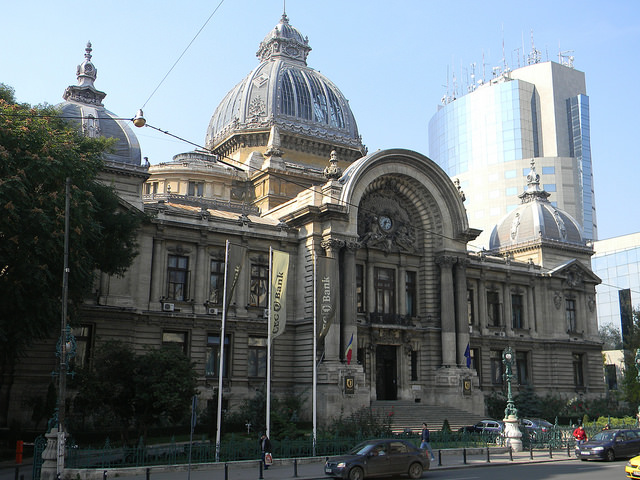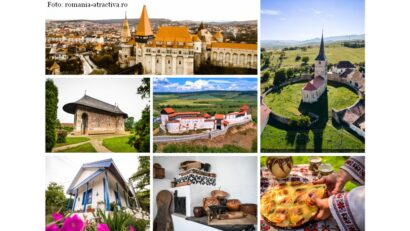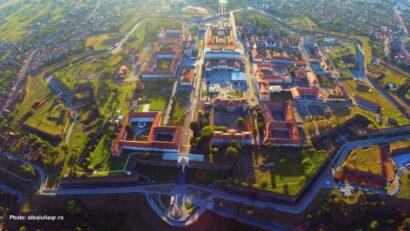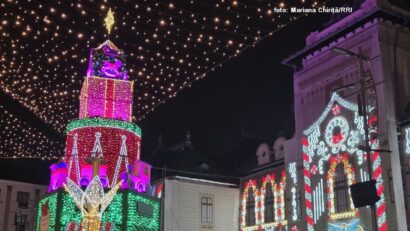Bucharest
Romania's capital Bucharest is the sixth largest city in the EU

Daniel Onea, 30.08.2018, 01:16
Romania’s
capital Bucharest has more than 2.4 million inhabitants and is the sixth
largest city in the European Union. Bucharest is on the foreign tourists’ list
of favourite destinations in Romania, alongside the Black Sea coast, the Danube
Delta, Bukovina and Maramures. In spite of the fact that it is located in a
plain area, its terrain is not totally flat. Elevation, however, does not
exceed 100 metres. Adriana Nica, an executive director with a tourism training
company, is our guide through the city of Bucharest. We start our journey from
the Victory Road, the city’s most important road and one of its main attractions:
This is one of the most
important boulevards in Bucharest. It boasts many tourist, historical, cultural
and spiritual points of attraction.. But before we talk about them, we should
know where the boulevard’s name comes from and why this is such and important
road. Until 1692, Bucharest had two roads. The Brasov Road, which started from
today’s Victory Boulevard going down to the Palace of the National Military
Circle, and Ulita Mare, the Large Street, towards Sarindari, stretching from
Sarindari Church to the Nations’ Square. The Palace of the National Military
Circle was built on the site of the old Sarindari Church. In 1692, ruler
Constantin Brancoveanu united the two roads into a single one, named Podul
Mogosoaiei, – the Mogosoaia wood-paved road. On October 8th, 1878,
the Romanian army made its triumphal entry into Bucharest, marching
victoriously along Mogosoaia Road. In order to mark this victory and serve as a
reminder for the coming generations on how the country’s independence was won,
this major street was named the Victory Road. The Victory Road practically
marks Romania’s winning its independence in the 1877 – 1878 war.
According to Adriana Nica, not only is
the Victory Road a major thoroughfare but it is guarded by many historical sites and important buildings: We have made a selection of
the most important attractions in the city. The first stopover we recommend is
the National George Enescu Museum housed by the Cantacuzino Palace. The building
is a genuine architectural gem, built around 1903 by Gheorghe Grigore
Cantacuzino. The Romanian composer George Enescu lived for a while in the
Cantacuzino Palace and after his death, in 1956 the building was turned into a
museum dedicated to the composer’s life and work.
The next important site on
Victory Road is the Romanian Athenaeum. Adriana Nica: The Athenaeum was
inaugurated back in 1889 and was built with money obtained from a public fund
raising campaign, entitled ‘Give one Leu for the Athenaeum’ , the Leu being the
country’s national currency. It took several years to raise all the money and
the building became the reason why Bucharest was called the Little Paris. It
was built in the neo-classical style but it also has eclectic elements and
elements belonging to the 19th century French architecture.
Opposite the Athenaeum building lies the Royal Palace. Over 300
years ago, in 1659, when the capital of Wallachia was moved from Targoviste to
Bucharest, you could find in that emplacement the far end of Mogosoaia Bridge,
with the buildings at the edge of town, a house and Cretulescu Monastery.
Adriana Nica, the executive director of
a tourism training agency told us: This house, which later was turned into the Royal Palace,
changed ownership several times, being owned by several wealthy clerics, and
later, in 1833, it was sold to the Administrative Council. They decided to turn
it into the prince’s residence, and the palace underwent improvements made by
several architects, among them the famous Xavier Villacrosse. During the rule
of Alexandru Ioan Cuza, in 1860, the palace had its interior improved, with
decorative art in Napoleon III style. Under the reign of Carol I, the princely
palace was turned into the royal palace. Even if the interior was not exactly
impressive, Carol I managed to make it elegant and refined, putting in statues
and paintings. The palace was further adorned by a valuable international
painting collection, with Renaissance and Baroque pieces. Today, the collection
is in the Royal Palace and Romania’s National Art Museum. King Ferdinand I
ordered modifications to the palace, which were completed by Carol II, in 1940,
when Romania was at war. Carol II’s favourite architect was Arthur Lorenz, who
was the chief architect of the court. After King Michael I’s forced abdication,
the communists turned the palace into a National Art Museum.
The Savings Bank Palace, also on Victory Road, is another impressive
building. Adriana Nica: The Savings Bank Palace is still an architectural
icon of the Little Paris and was inaugurated in 1900. It was built in the
French Neo-Baroque style, with tripartite facades, meant to highlight its shape
on the Victoria Road. The top of the building is a dome made of massive glass
and metal. The building’s resistance it rendered by its entrance crowned by a
semi-circle gable supported by composite style columns. Other Renaissance-style
buildings cover four volumes of corner, in turn decorated with gables and
coats-of-arms. Exceptional fixtures of the façade and the balance of volumes
have stood the test of time. So none of the tremors that have shaken Bucharest
have damaged the structure of the building. On the premises, in the palace
there is also a museum, inaugurated in September 2005.
Across the street from the Savings Bank Building there stands the
Post Office Palace, which was also inaugurated in 1900. The neo-classical
building also has an inner courtyard, while the outer aspect of the building,
as Adriana Nica told us, seems to be inspired from the Post Office Palace in
Geneva. Until 1972, the palace hosted the central headquarters of the Post
Office in Bucharest. The National Museum of History was inaugurated in the Post
Office palace in 1971.






























